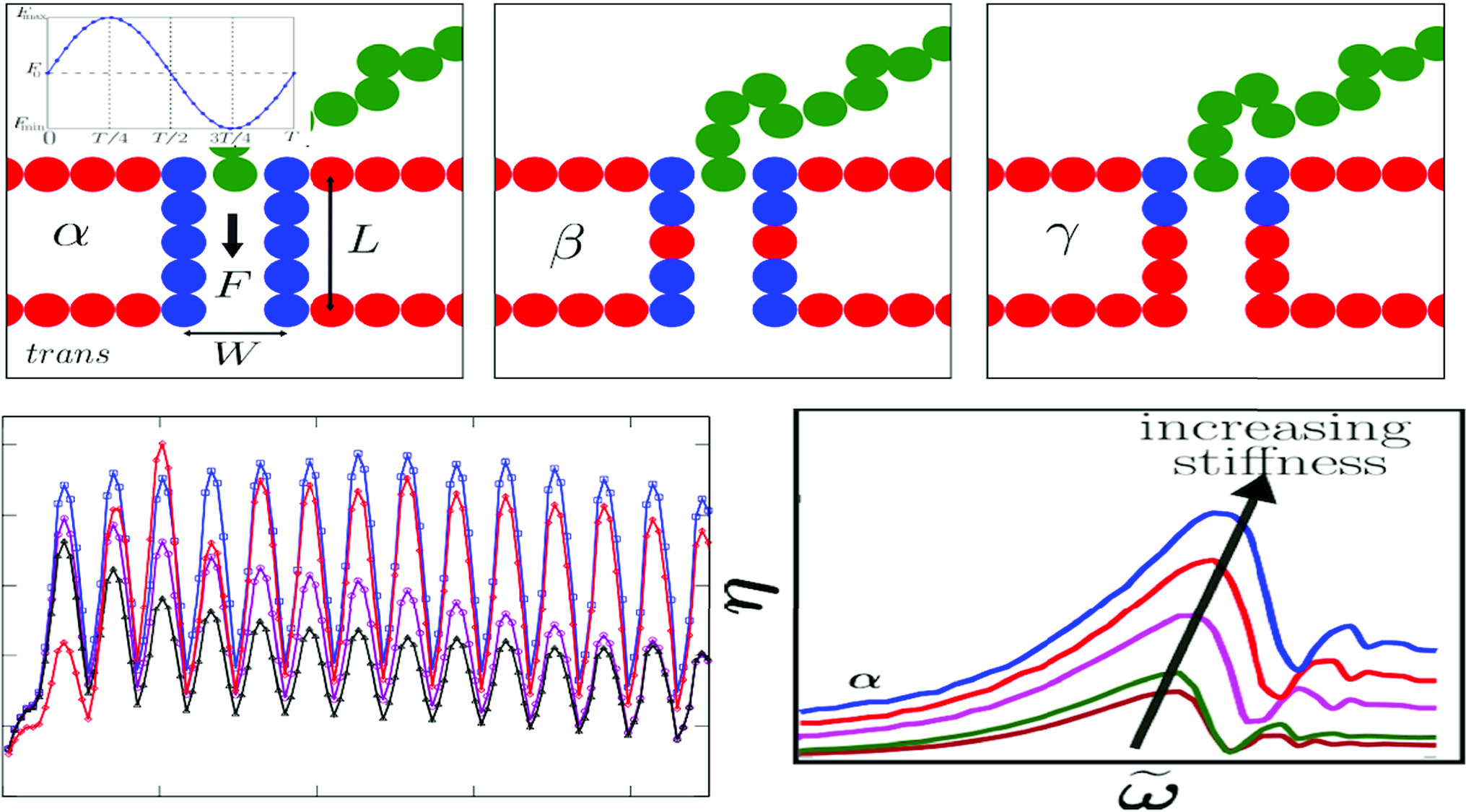https://doi.org/10.1140/epje/s10189-024-00417-8
Regular Article - Soft Matter
Homopolymer and heteropolymer translocation through patterned pores under fluctuating forces
Department of Physical Sciences, Indian Institute of Science Education and Research Mohali, Sector 81, Knowledge City, S. A. S. Nagar, 140306, Manauli, India
Received:
5
January
2024
Accepted:
18
March
2024
Published online:
4
April
2024
We investigate the translocation of a semiflexible polymer through extended patterned pores using Langevin dynamics simulations, specifically focusing on the influence of a time-dependent driving force. Our findings reveal that, akin to its flexible counterpart, a rigid chain-like molecule translocates faster when subjected to an oscillating force than a constant force of equivalent average magnitude. The enhanced translocation is strongly correlated with the stiffness of the polymer and the stickiness of the pores. The arrangement of the pores plays a pivotal role in translocation dynamics, deeply influenced by the interplay between polymer stiffness and pore-polymer interactions. For heterogeneous polymers with periodically varying stiffness, the oscillating force introduces significant variations in the translocation time distributions based on segment sizes and orientations. On the basis of these insights, we propose a sequencing approach that harnesses distinct pore surface properties that are capable of accurately predicting sequences in heteropolymers with diverse bending rigidities.
Copyright comment Springer Nature or its licensor (e.g. a society or other partner) holds exclusive rights to this article under a publishing agreement with the author(s) or other rightsholder(s); author self-archiving of the accepted manuscript version of this article is solely governed by the terms of such publishing agreement and applicable law.
© The Author(s), under exclusive licence to EDP Sciences, SIF and Springer-Verlag GmbH Germany, part of Springer Nature 2024. Springer Nature or its licensor (e.g. a society or other partner) holds exclusive rights to this article under a publishing agreement with the author(s) or other rightsholder(s); author self-archiving of the accepted manuscript version of this article is solely governed by the terms of such publishing agreement and applicable law.





